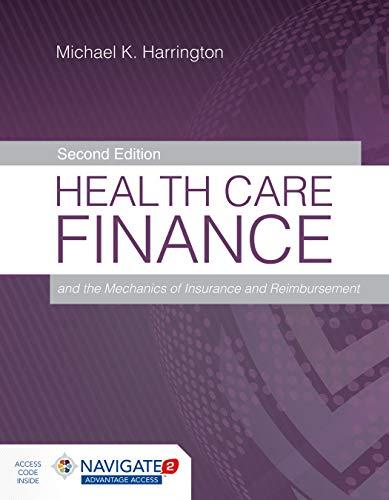1)

2)
3)
4)
5)
6)
Exercise 10-5A (Algo) Determining net present value LO 10-2 Zachary Company is considering investing in two new vans that are expected to generate combined cash inflows of $28,000 per year. The vans' combined purchase price is $96,000. The expected life and salvage value of each are five years and $20,100, respectively. Zachary has an average cost of capital of 16 percent. (P of $1 and PVA of $1) (Use appropriate factor(s) from the tables provided.) Required a. Calculate the net present value of the investment opportunity. (Negative amount should be indicated by a minus sign. Round your intermediate calculations and final answer to 2 decimal places.) b. Indicate whether the investment opportunity is expected to earn a return that is above or below the cost of capital and whether it should be accepted. Net present value a b. Will the return be above or below the cost of capital? Should the investment opportunity be accepted? Aaron Heath is seeking part-time employment while he attends school. He is considering purchasing technical equipment that will enable him to start a small training services company that will offer tutorial services over the Internet. Aaron expects demand for the service to grow rapidly in the first two years of operation as customers learn about the availability of the Internet assistance. Thereafter, he expects demand to stabilize. The following table presents the expected cash flows: Year of Operation Year 1 Year 2 Cash Inflow Cash Outflow $13,400 20,300 22,100 22,100 $ 8,800 11,800 Year 3 Year 4 13,100 13,100 In addition to these cash flows, Aaron expects to pay $20,900 for the equipment. He also expects to pay $2,700 for a major overhaul and updating of the equipment at the end of the second year of operation. The equipment is expected to have a $1,600 salvage value and a four year useful life. Aaron desires to earn a rate of return of 10 percent. (PV of $1 and PVA of $1) (Use appropriate factor(s) from the tables provided.) Required a. Calculate the net present value of the investment opportunity. (Negative amount should be indiceted by a minus sign. Round intermediate calculations end finel answer to 2 decimal places.) b. Indicate whether the investment opportunity is expected to earn a return that is above or below the desired rate of return and whether it should be accepted. a Net present value Will the return be above or below the cost of capital? Should the investment opportunity be accepted? b. Exercise 10-7A (Algo) Using the present value index LO 10-2 Zachary Company has a choice of two investment alternatives. The present value of cash inflows and outflows for the first alternative is $220,000 and $189,000, respectively. The present value of cash inflows and outflows for the second alternative is $395,000 and $310,000, respectively. Required a. Calculate the net present value of each investment opportunity. (Negative amounts should be indicated by a minus sign.) b. Calculate the present value index for each investment opportunity. (Round "PVI" to 2 decimal places.) c. Indicate which investment will produce the higher rate of return. Alternative 1 (NPV) a. Aternative 2 (NPV) b Alternative 1 (PVI) Alternative 2 (PVI) The investment that will produce the higher rate of return is C. Exercise 10-9A (Algo) Determining the internal rate of return LO 10-3 Stuart Manufacturing Company has an opportunity to purchase some technologically advanced equipment that will reduce the company's cash outflow for operating expenses by $1,270,000 per year. The cost of the equipment is $8,521,802.87. Stuart expects it to have a 10-year useful life and a zero salvage value. The company has established an investment opportunity hurdle rate of 15 percent and uses the straight-line method for depreciation. (PV of $1 and PVA of $1 (Use appropriate factor(s) from the tables provided.) Required a. Calculate the internal rate of return of the investment opportunity. (Do not round intermediate calculations.) b. Indicate whether the investment opportunity should be accepted. Internal rate of return b Should the investment opportunity be accepted? Exercise 10-13A (Algo) Determining the payback period with uneven cash flows LO 10-4 Solomon Company has an opportunity to purchase a forklift to use in its heavy equipment rental business. The forklift would be leased on an annual basis during its first two years of operation. Thereafter, it would be leased to the general public on demand. Solomon would sell it at the end of the fifth year of its useful life. The expected cash inflows and outflows follow: Year Nature of Item Purchase price Cash Inflow Cash Outflow $90, 600 Year 1 Year 1 Revenue Revenue $37,000 37,800 26,000 Year 2 Year 3 Revenue Year 3 Major overhaul 9,400 Year 4 Revenue 23,000 21,000 8, 200 Year 5 Revenue Salvage value Year S Required a.&b. Determine the payback period using the accumulated and average cash flows approaches. (Round your answers to 1 decimal place.) a Payback period (accumulated cash flows) b. Payback period (average cash flows) years years Problem 10-18A (Algo) Postaudit evaluation LO 10-2 Brett Collins is reviewing his company's investment in a cement plant. The company paid $14,900,000 five years ago to acquire the plant. Now top management is considering an opportunity to sell it. The president wants to know whether the plant has met original expectations before he decides its fate. The company's desired rate of return for present value computations is 10 percent. Expected and actual cash flows follow: (PV of $1 and PVA of $1) (Use appropriate factor(s) from the tables provided.) Year 1 $3,340,000 2,670,000 Year 2 Year 3 $4,650,000 4,870,000 Year 5 $4,220,000 3,560,000 Vear 4 Expected Actual $5,060,000 3,010,000 $5,000,000 3,820,000 Required a.&b. Compute the net present value of the expected and actual cash flows as of the beginning of the investment. (Negative amounts should be indicated by a minus sign. Round your intermediate celculetions and final answer to the nearest whole dollar.) Net present value (expected) Net present value (actual)













